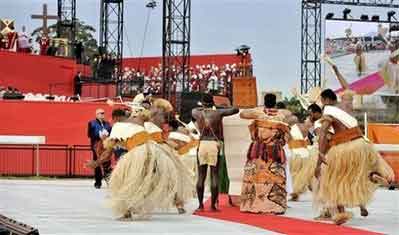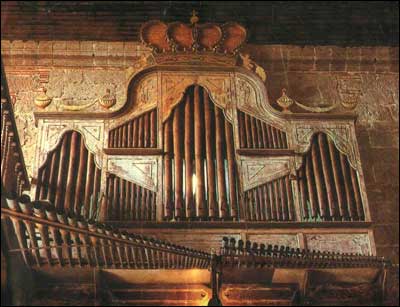
THE IMPORTANCE of music in biblical religion is shown very simply by the fact that the verb “to sing” (with related words such as “song”, and. so forth) is one of the most commonly used words in the Bible. It occurs 309 times in the Old Testament and thirty-six in the New. When man comes into contact with God, mere speech is not enough. Areas of his existence are awakened that spontaneously turn into song. Indeed, man’s own being is insufficient for what he has to express, and so he invites the whole of creation to become a song with him: “Awake, my soul! Awake, 0 harp and lyre! I will awake the dawn! I will give thanks to you, 0 Lord, among the peoples; I will sing praises to you among the nations. For your steadfast love is great to the heavens, your faithfulness to the clouds” (Ps 57:8f.). We find the first mention of singing in the Bible after the crossing of the Red Sea. Israel has now been definitively delivered from slavery. In a desperate situation, it has had an overwhelming experience of God’s saving power. Just as Moses as a baby was taken from the Nile and only then really received the gift of life, so Israel now feels as if it has been, so to speak, taken out of the water: it is free, newly endowed with the gift of itself from God’s own hands. In the biblical account, the people’s reaction to the foundational event of salvation is described in this sentence: “[T]hey believed in the Lord and in his servant Moses” (Ex 14:31). But then follows a second reaction, which soars up from the first with elemental force: "Then Moses and the people of Israel sang this song to the Lord” (i 5: i). Year by year, at the Easter Vigil, Christians join in the singing of this song. They sing it in a new way as their song, because they know that they have been “taken out of the water” by God’s power, set free by God for authentic life. [The Spirit of the Liturgy, (SF, CA: Ignatius, 2000), p. 136]
The singing of the Church comes ultimately out of love. It is the utter depth of love that produces the singing. “Cantare amantis est”, says St. Augustine, singing is a lover’s thing. In so saying, we come again to the trinitarian interpretation of Church music. The Holy Spirit is love, and it is he who produces the singing. He is the Spirit of Christ, the Spirit who draws us into love for Christ and so leads to the Father. [The Spirit of the Liturgy, (SF, CA: Ignatius, 2000), p. 142]
In liturgical music, based as it is on biblical faith, there is, therefore, a clear dominance of the Word; this music is a higher form of proclamation. Ultimately, it rises up out of the love that responds to God’s love made flesh in Christ, the love that for us went unto death. After the Resurrection, the Cross is by no means a thing of the past, and so this love is always marked by pain at the hiddenness of God, by the cry that rises up from the depths of anguish, Kyrie eleison, by hope and by supplication. But it also has the privilege, by anticipation, of experiencing the reality of the Resurrection, and so it brings with it the joy of being loved, that gladness of heart that Haydn said came upon him when he set liturgical texts to music. Thus the relation of liturgical music to logos means, first of all, simply its relation to words. That is why singing in the liturgy has priority over instrumental music, though it does not in any way exclude it. It goes without saying that the biblical and liturgical texts are the normative words from which liturgical music has to take its bearings. This does not rule out the continuing creation of “new songs”, but instead inspires them and assures them of a firm grounding in God’s love for mankind and his work of redemption. [The Spirit of Liturgy [SF, CA: Ignatius, 2000], p. 149]








_.jpg)


